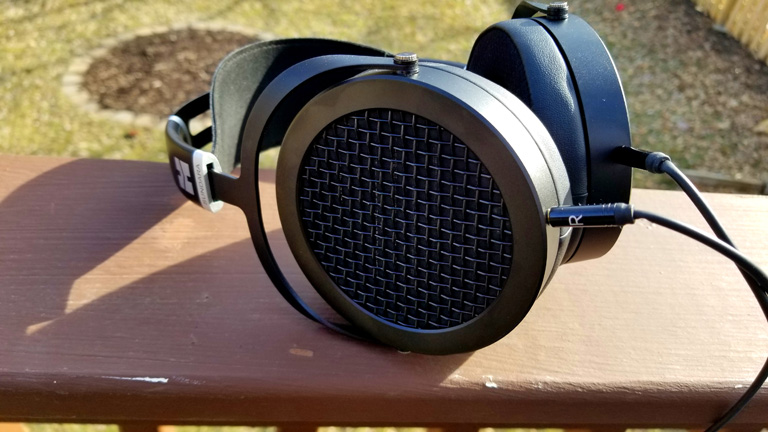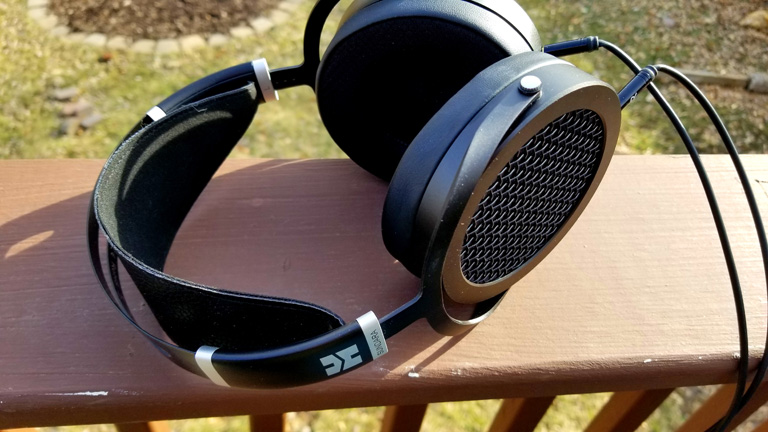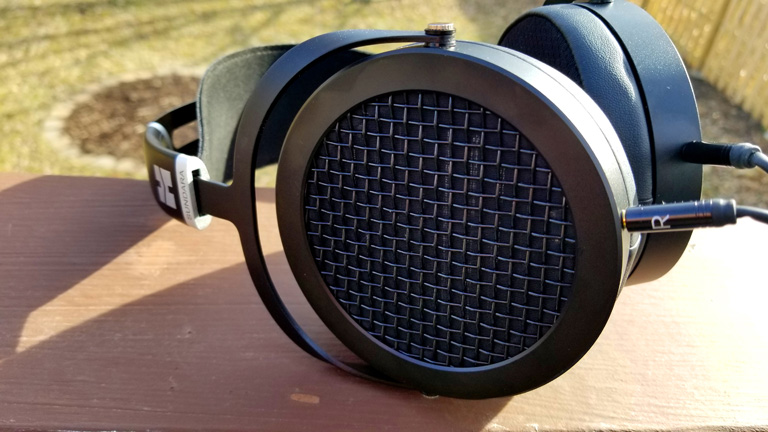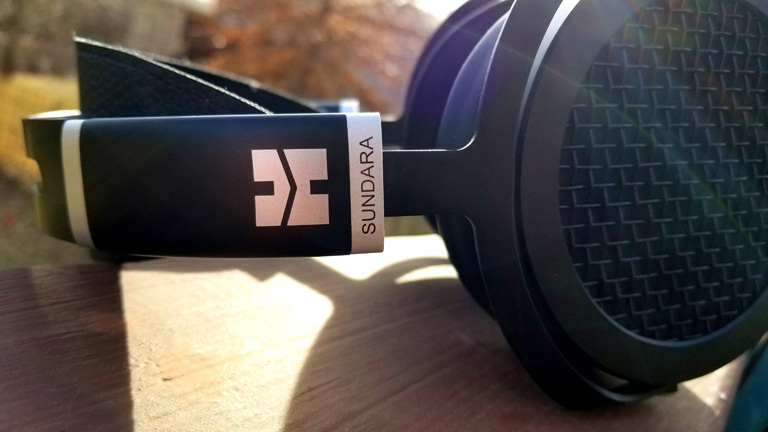The HiFiMAN Sundara is reference-quality neutral. It wields a clean, colorless blade, and cuts swift and precise. It lacks nothing. Nor will you find excess on any flank. The balance leans neither warm nor bright, while delivering a very natural, easy listen. Sundara has an almost relaxed presentation, though not quite. It sits somewhere between energetic and laidback.
Treble notes extend to the highest possible reaches, giving the stage all the air and articulation you could ever want. This helps to create some of the most lifelike sounds I’ve heard from a headphone. With all this extension, things could go awfully if HiFiMAN spiked the treble like they have sometimes done in the past. I remember being unable to listen to The White Stripes on the RE800, as cymbal clashes and guitar screeches were literally painful to the ears. Sundara does not suffer this flaw. High-flung notes, even reckless, savage ones, remain well within tolerance. But do not think Sundara lacks bite. My DSD copy of Salvatore Accardo – Antonio Vivaldi Le Quattro Stagioni has all the sharpness and eloquence those violins are capable of. As I said, these cans are reference quality.

Vocals are displayed naked, stripped of color, all their texture, idiosyncrasies, strength and flaws, exposed to the listener. They have no great body or roundness. But they also do not feel hollow. Personally, I like a bit more warmth in the singer’s voice, though I recognize Sundara is the truer form of neutral. Instruments have a natural timbre and showcase power, without becoming too weighty. Likewise, electric guitars are agile enough for that satisfying crunch, without straying into abnormal levels of brightness or aggression.
The bass is bound to be the area of most complaint. In case you missed it, Sundara is tuned for reference and neutrality. Because of this, there is less bass than many headphones on the market. And yes, there is less than I am used to. I prefer a slight mid-bass hump to create a touch of warmth and body to the notes. While Sundara does not do this, it makes up for it with perfect quality. Those sub frequencies convey a flawless tone which makes you forget you’re listening to headphones at all; it sounds so real! The low-end extension is outstanding! This sort of profile also helps with overall speed and detail. Sundara’s bass may not blow you away with quantity, but it strikes hard, rumbles deep, and renders the lows in full resolution.
Soundstage is decidedly cubical, with equal width, depth, and height. While it’s not huge, you won’t likely feel claustrophobic. It’s big enough to enjoy the instrument separation, which is profoundly clean and well-defined. As is the imaging. These cans are high-res monsters, bad-ass performers, and you simply can’t hope for much more than they offer. Detail, sharpness, transients… Sundara delivers the goods, and then some.

iBasso’s SR1 ($499) makes an excellent comparison. Although it may use vastly different driver technology, it stands strong alongside Sundara. In comfort, it is nearly Sundara’s equal, though I may give it to HiFiMAN by a hair. Especially if I count microphonics, which iBasso is plagued by.
As for tuning, SR1 is more v-shaped, with elevated bass and treble, and slightly recessed vocals. It’s a mild v-shape, though. The singer is not pushed too far back. Maybe just a step and a half compared to Sundara, who keeps them right in front of you. The SR1’s low-end pounds and blooms and feels less controlled. On the other hand, it can sometimes be more satisfying, for Rock in particular. The treble, however, is less enjoyable, as it can be a tad bright and unnatural compared to Sundara’s smooth and perfectly organic highs. Apart from their placement, the vocals share a lot in common, both very detailed and transparent. Though, the SR1 gives them a hint of warmth and body, thanks to an abundance of mid-bass.
Soundstage may be slightly wider, but shorter, on the SR1. And because of the v-shaped signature, you may perceive some extra depth. Separation is fantastic on both, though I could give Sundara a little extra credit there. But really, it’s a close call. Resolution, detail, articulation… you can’t go wrong with either. They are top performers.
The SendyAudio Aiva ($599) is another perfect comparison. All three of these cans sit around the $500 mark, and each fights tooth and nail to be taken seriously. Not a one of these is a lemon, and I’ve spent many lovely hours basking in their brilliance.
Aiva is tuned more like Sundara than SR1, aiming for clear, resolving neutrality. The bass and mids seem perfectly flat to my ears. Where it differs is in the treble. A lower-treble bump is present, creating a subtle, artificial shimmer which affects the highs and the mids. You could call it sparkle, but however you word it, compared to Sundara, it simply sounds less natural. Sundara is all around smoother and more lifelike, and I’d bet money it extends further. Even Aiva’s bass, which is quite pleasant, doesn’t feel as whole and complete. Soundstage is nearly identical to Sundara, and things like imaging and separation are stellar. As is resolution. Comfort I’d give to Sundara, though to be honest, I have no complaints with Aiva. Neither one should trouble you during long sessions. Aiva may struggle to beat Sundara in performance, by a VERY small degree, but it makes up for it in aesthetic beauty. I’m a slut for wood, and the craftsmanship my SendyAudio is inarguably marvelous. And they have the best cable of the lot.





5 Responses
Nice review! I have the Sundara and the SR1 too and can easily follow your listening results. These are really well made and outstanding sounding phones. And yes I also have no favorite between the two 😉
You need to use the PT1 pads or other perforated pads on the SR1. Big difference as it is a more open sound and the bass is extremely good. Try some different pads is all I can say, regarding the SR1.
lol. Well, theoretically, I could discover a new “best” with each review, if I happened to start at the bottom and work my way up. But that’s not very likely, is it? On the other hand, technology is ever progressing in this industry, and the latest releases do have very strong potential to out-perform previous generation gear.
I try and be honest with my reviews. If the item I’m testing strikes me as better than other things in that price-range, I feel I must say so.
I’ll give you a little spoiler: My next two reviews are the Aiva and SR1, which, as you know from reading this article, won’t be toppling Sundara in my eyes. 😉
except this one really is
Someone needs to tell pink that not everything he reviews can be the best ever.